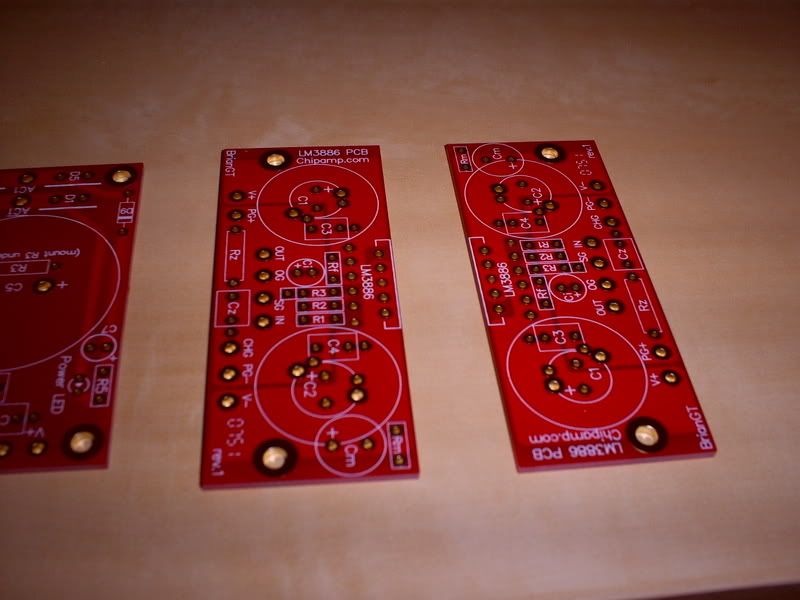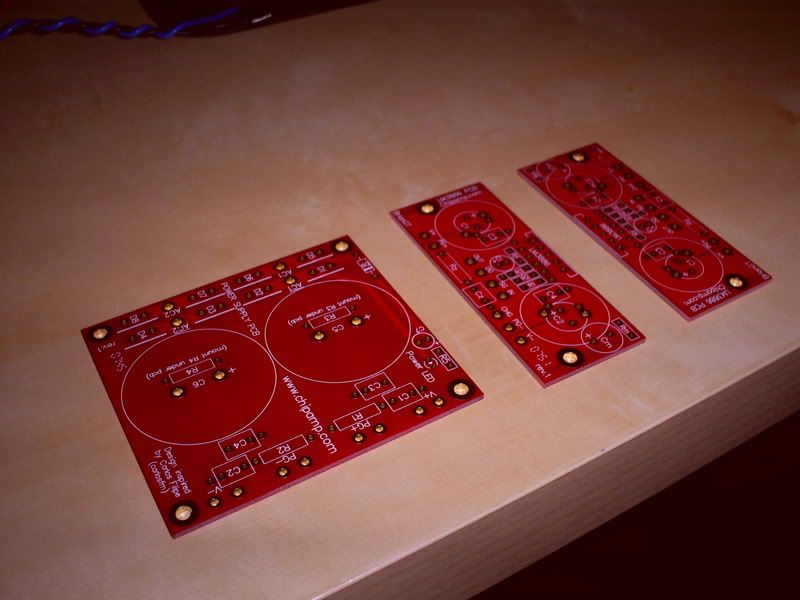Soldato
Some of you may remember me posting enquiring about D.I.Y chip amps, well i got around to starting a project and i thought i would share my progress with you all.
My kit came from WWW.CHIPAMP.COM and its based around the LM3886 chip, by all acounts its a pretty decent amp and great for a first project because of its low componant count and ease of build.
Sorry for the shots the old 5mp cam isnt getting old gracefully
These are the pcb's as they arrive, I got a special deal and got a spare psu and amp boards for free with my order of the stereo kit.
These are the amp bords.

This is the pcb for the subberized power supply.

Here are some shots of the power supply pcb's populated and solderd, looks nice and neat, i was suprised how well these turned out, all soldering is done with lead free silver/tin solder.


The amp boards were a lot of fun to do, the lm3886 chips i got came well packaged and were in top condition considering its journey form the US.



The underside to show the solder and input/output connections along with the V+ and V- points, and lastly the chasis earth.


My kit came from WWW.CHIPAMP.COM and its based around the LM3886 chip, by all acounts its a pretty decent amp and great for a first project because of its low componant count and ease of build.
Sorry for the shots the old 5mp cam isnt getting old gracefully

These are the pcb's as they arrive, I got a special deal and got a spare psu and amp boards for free with my order of the stereo kit.
These are the amp bords.

This is the pcb for the subberized power supply.

Here are some shots of the power supply pcb's populated and solderd, looks nice and neat, i was suprised how well these turned out, all soldering is done with lead free silver/tin solder.


The amp boards were a lot of fun to do, the lm3886 chips i got came well packaged and were in top condition considering its journey form the US.



The underside to show the solder and input/output connections along with the V+ and V- points, and lastly the chasis earth.














 .
.